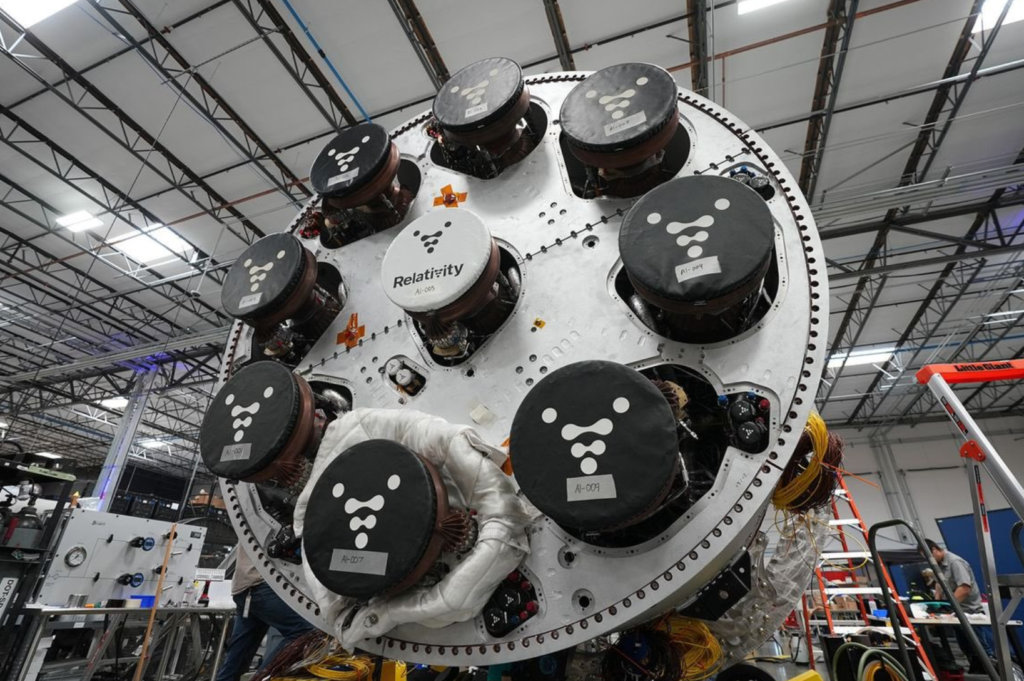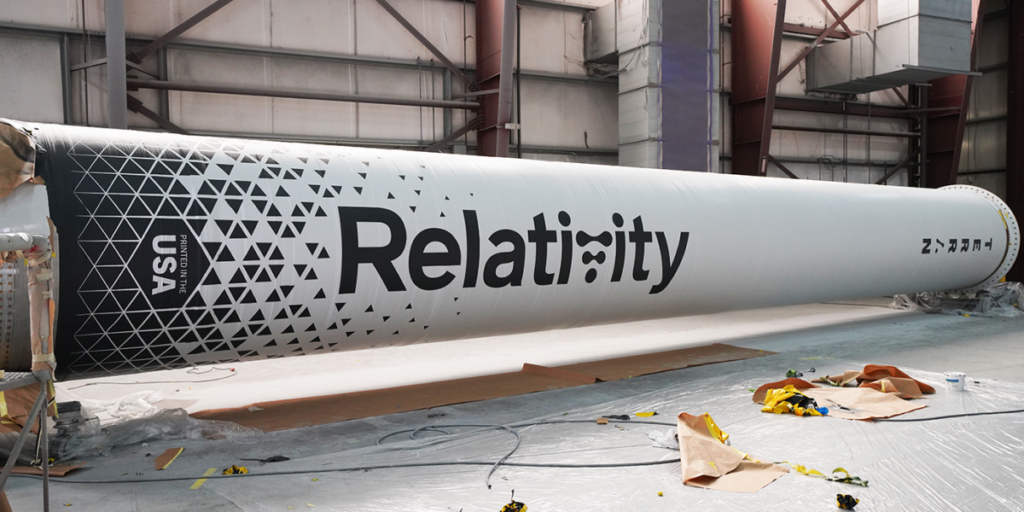
Relativity Space Continues On Track For Its First Orbital Test Flight
Relativity Space has one of the most important tests the company has ever attempted coming up. Not long from now, Relativity will try to launch Terran 1 into orbit. The first orbital test flight is immensely difficult and a consistent pattern of failures can be seen in many companies within the space industry today. This being said, a lot of those same companies who failed their initial flight are now very successful.
Not only is relativity trying to reach orbit for the first time, but this launch will also be a first in regards to the unique manufacturing process the company uses. Terran 1 is practically fully 3D printed which provides some challenges and a host of benefits if successful. Depending on the outcome of this launch and future ones to come, it could have a large influence on the rest of the space industry.
However, before the company launches for the first time, they still have a lot of work to do. Recently they have continued to provide updates on their progress and how things are coming along. Relativity needs to make sure everything is perfect before the launch. Here I will go more in-depth into some of the recent progress the company has made, and what to expect in the near future.
Recent Updates

As per usual, in the last few weeks alone, Relativity has provided multiple valuable updates on its progress along with plans for the upcoming future. This came in the form of not only tweets from the company itself but also CEO Tim Ellis and more. This began 4 days ago on the 26th when Relativity tweeted saying, “Stage 2 is making great time on its way to #CapeCanaveral, Florida, where #Terran1 will launch this year. Check out a recent photo of S2 crossing state lines!” After finishing testing not long ago, we have watched this stage through its transportation process leading up to the launch. Only a few days later on the 28th, Tim Ellis tweeted mentioning, “From 2 guys in a WeWork dreaming of an end-2020 first launch, to today: 800 people across multiple sites, we developed an entirely new large scale manufacturing tech + advanced oxygen/methane rockets, with $hundreds of millions in customer contracts launching in a few more weeks.” In another tweet right after he clarified that a more accurate timeline was a few low digit months.
This is by far some of the most exciting news we have received from the company regarding this first launch. It’s clear that each aspect of the complex process is coming together and Relativity is very close to this milestone. In addition to these updates and progress towards the first launch, Relativity is also continuing to progress on its new complex. This brand new headquarters and expanded factory will host both the company’s business operations and an unprecedented manufacturing facility, integrating machine learning, software, and robotics with metal additive manufacturing technology to consistently produce Terran 1. A big aspect of Relativity’s manufacturing process has to do with speeding up the build phase thanks to 3D printing. Having the high-quality infrastructure to help facilitate this is necessary for the future and is going to have an impact on the first and many future launches of Terran 1 and beyond. Lastly, in terms of updates, on May 24th, Time Ellis tweeted this time saying, “Alright we just signed another huge deal – I cannot wait to share with you all! Humbled by all the progress recently and excited for our team to deliver 2022 is proving to be a crazy year but one where we are lights out executing as we drive to first orbital Terran 1 launch.” Based on this tweet it’s hard to tell exactly what the deal is but based on the excitement of CEO Tim Ellis, we can expect it to be important for the future of the company and accessing space.
Terran 1’s First Launch

Now that we are caught up to date on some of the recent progress Relativity Space has made, we can take a closer look at why this launch with Terran 1 is so special, and what it means for the future of accessing space. Terran 1 is designed for the future of constellation deployment and resupply. Its unique and software-driven architecture is capable of accommodating satellite customers’ evolving needs, while also providing an agile and affordable launch service to the market. Designed and printed in the USA, Terran 1 is considered one of the most innovative products to emerge from the aerospace manufacturing industry since the dawn of privatization of space 20 years ago.
One of the reasons this launch is so significant, is the application and prospect of successfully launching a 3D printed rocket. This launch will not only be a first for the company, but also in many ways the industry, which will increase the number of eyes watching when it takes flight. Relativity highlights that for 60 years, aerospace manufacturing has relied on large factories, fixed tooling, complex supply chains, and extensive manual labor to build costly rockets comprised of 100,000+ parts in 2 years or longer. To accelerate innovation in the industry, Relativity built its Factory of the Future, the first aerospace platform to automate rocket manufacturing, vertically integrating intelligent robotics, software, and data-driven 3D printing technology. Incorporating Stargate, the world’s largest metal 3D printer with AI-driven controls, its Factory of the Future continuously optimizes production, resulting in greatly compounded quality and time improvements, lower costs, and product designs previously not possible. Relativity is an application-layer 3D printing company that is starting with rockets, and will extend its Factory of the Future to all of aerospace.
Relativity’s proprietary Factory of the Future centers on Stargate, the world’s largest metal 3D printers, that create Terran 1, the world’s first 3D printed rocket, and the first fully reusable, entirely 3D printed rocket, Terran R, from raw material to flight in 60 days. These printers enable an entirely new value chain and innovative structural designs that make Terran 1 and Terran R possible. By developing its Factory of the Future and rockets together, Relativity accelerates its ability to improve design, production, quality, and speed. All of which applies to the upcoming launch and true test for a lot of the company’s processes.
The design of Terran 1 is intended to provide a predictable and controlled launch environment allowing for simplified payload design requirements. Terran 1 can support both industry-standard and custom interfaces, using commercially available adapter and separation hardware in addition to mission-specific designs. Environmental control systems maintain clean, thermally controlled payload environments. Terran 1 has a single-string avionics system designed using a combination of flight-proven, off-the-shelf components and in-house designs. The avionics system includes, but is not limited to, a flight computer, global positioning system (GPS), inertial measurement unit (IMU), telemetry processor, custom data acquisition and vehicle control processors, high speed sensor suite, batteries, and cameras. The avionics suite is duplicated on the test bench with a full hardware-in-the-loop (HITL) system to simulate full missions in order to exercise hardware, software, and algorithm performance in a test-like-you-fly environment. In addition, Relativity develops ground and flight software in-house and thoroughly exercise it using HITL tests prior to deployment to a flight vehicle.
In order to maximize flexibility, the avionics system includes a bussed, modular infrastructure that makes it possible to rapidly add or subtract components to meet changing vehicle configurations. Relativity designed the avionics system to leverage component and architecture commonality across both stages in order to reduce development time and simplify vehicle operations. They also designed vehicle components to be as accessible as possible, allowing for the company to quickly and unobtrusively make any necessary modifications late in the integration process. Our engineering team is considering vehicle reusability in our development roadmap and is making allocations in the current design for a fluid upgrade transition to reusability. All of which will be put to the test in only a few short months from now. This is one aspect of first test flights that are so exciting and nerve-racking at the same time. For years now Relativity Space has been building up to this launch of Terran 1. Now we have to wait just a bit longer to see how they do.
Conclusion
Different companies and agencies within the space industry are all working on new and ambitious projects for the future. Of these different organizations, Relativity Space is preparing for its first-ever orbital test flight. After a lot of recent updates from the company and CEO, we can expect to watch this launch only a few months from now. It’s important to point out that the first launch of a rocket is a big deal and rarely is 100% successful. We will have to wait and see how it progresses and the impact it has on the space industry.
